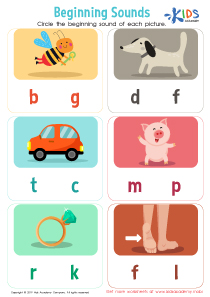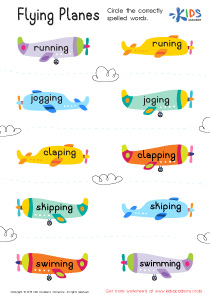Reading skills development Letter Sounds Worksheets for Ages 4-6
3 filtered results
-
From - To
Our Reading Skills Development Letter Sounds Worksheets are designed specifically for children aged 4-6, focusing on foundational reading skills. These engaging worksheets help young learners recognize alphabet sounds, blending them to form words. Each sheet is crafted to make learning fun with vivid illustrations and activities that hold children’s interest while building their phonemic awareness. With a variety of exercises that support different learning styles, your child will enjoy developing critical early reading skills at their own pace. Perfect for both classroom and at-home learning, our worksheets set the stage for future reading success. Start your child's reading journey today!
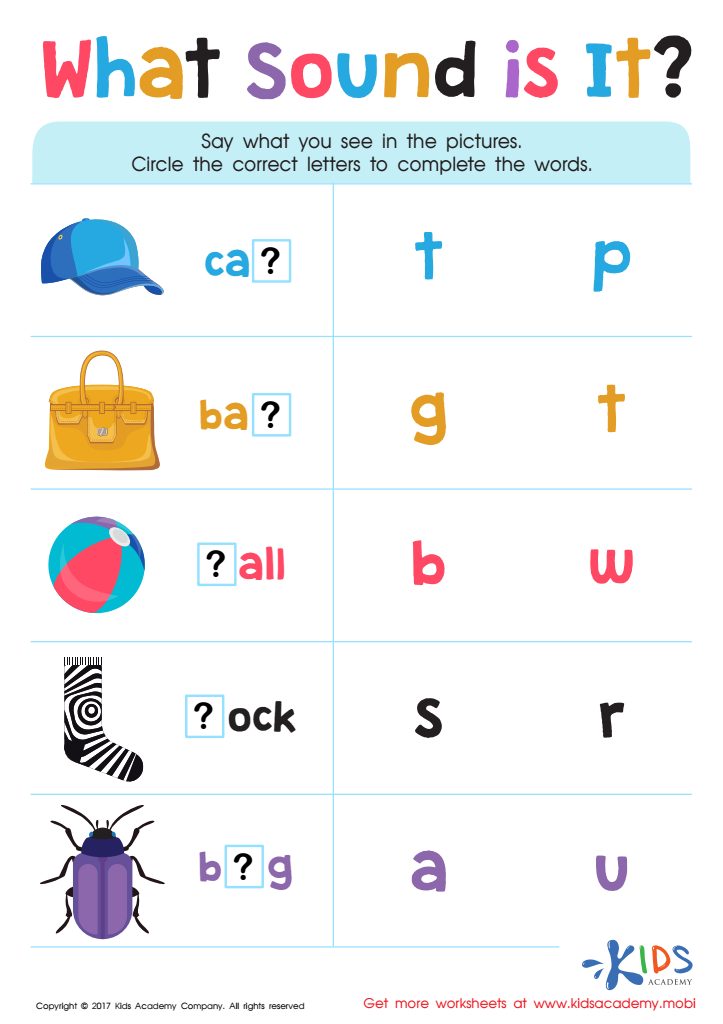

What Sound Is it? Worksheet
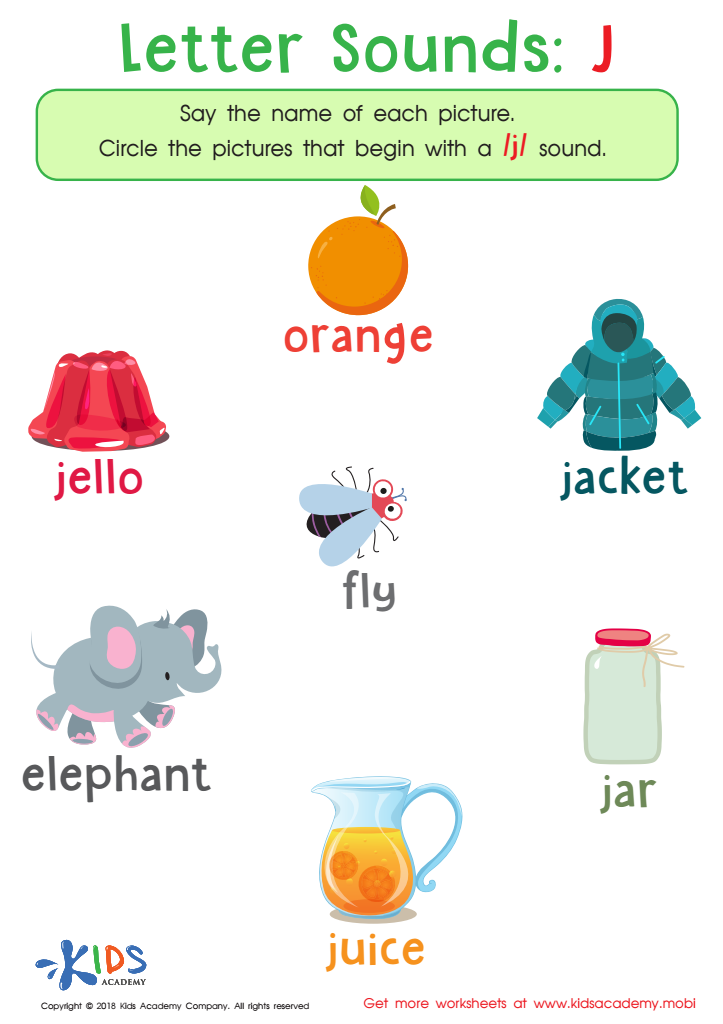

Letter Sounds: J Printable Worksheet
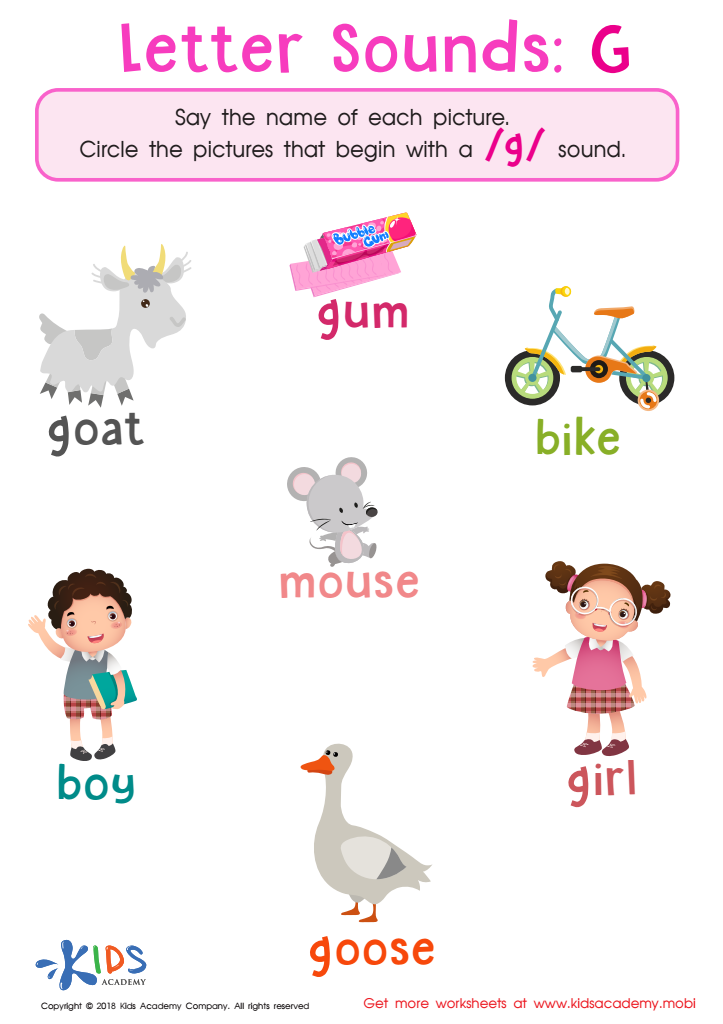

Letter G Sounds Worksheet
Parents and teachers should prioritize reading skills development, particularly letter sounds, for children aged 4-6 because it forms the foundational framework for literacy. At this age, children's brains are highly receptive to learning new skills, and phonemic awareness—the understanding of letter sounds— is crucial for future reading success. When children grasp letter sounds, they can decode words more easily, enabling smoother reading progress.
Strong letter-sound knowledge allows children to connect written language to spoken language, which enhances their comprehension and retention. For instance, knowing that the letter "B" makes a “buh” sound and "A" can make an “a” sound helps them to piece the word "bat" together. This decoding skill is vital for reading fluency and contributes significantly to vocabulary growth and comprehension abilities.
Moreover, early success in reading can be immensely motivating and boost children's confidence, laying the groundwork for a lifetime of learning and curiosity. Additionally, numerous studies have linked early reading skills to better academic performance later in life.
Caring about children's reading skills development helps ensure they don't fall behind, giving them a strong start in their educational journey. Investing time in teaching letter sounds at an early age sets them up for long-term success in reading, writing, and learning across all subjects.
 Assign to My Students
Assign to My Students








